| Ever thought about heading north, as in crossing the border north for a road trip? |
| I returned not long ago from my second trip (third if you count going up, crossing in and turning around to come back) to Canada. While I didn't ride my scooter, I did learn a few things about going from the US to Canada and coming back. |
| If you do plan to ride into Canada, then you will need a few things at the border. |
| Passport. Technically, you do not need a passport to cross the border by vehicle. If you fly in, yes you need a passport. I got in this year with my driver's license and my Department of Corrections employee ID. A passport is still recommended. |
| Coming back at the US border, my Canadian friend was driving, We passed over our IDs. She was not an issue. The customs agent looked at me and said, "If I didn't recognize your accent I wouldn't know where you are from." This was after he had my DL and DOC IDs. I said next time I better have a passport. |
| Yes sir. |
| Money. Canada customs will ask something along the lines of "Do you have enough to support yourself while in Canada?" Have some US cash. I had $220. I also had my debit card. You don't have to take a bank statement showing how much cash you have, but that could be handy. |
| A plan. The Canadian border agents will ask why you are coming, where you are going and how long you plan to be there. Telling them your itinerary is a good idea. |
| Be prepared to wait especially at the larger crossing. Small border crossings will have fewer people. |
| Do not take alcohol, food, tobacco or drugs (except what you have with a doctor's prescription and that MUST be in the pharmacy bottle). |
| Do not take a gun. You can take guns into Canada, but it is an involved process. |
| DIFFERENT TRAFFIC |
| When you cross the border, you are moving from Miles per Hour to Kilometers per Hour. |
| If your speedometer does not have a second set of numbers showing KpH, then you'll need to convert in your head. |
| Here is a good guide: |
| 30 mph = 48 kph |
| 40 mph = 64 kph |
| 50 mph = 80 kph |
| 55 mph = 88 kph |
| 60 mph = 96 kph |
| 70 mph = 112 kph |
| If you can't remember that, do like I do. KPH is half the MPH plus about 4-5 MPH more. You're actually a bit under the speed limit there, but better to be same that sorry. |
| ROAD RULES |
| Mandatory helmets. Canada has its own certification standards. If yours meets the DOT requirements, you are OK. |
| Canada and the US reciprocate licenses. If you have a Class M in the states, you are OK to ride in Canada. |
| Laws vary across the provinces, what we call states here. For instance, ape hangers are not allowed in Ontario. "In the vernacular of the biker, it is called 'the 15 inch' law. For the rest of us, it is called the 'no part of the handlebars can exceed a height of 380mm (14.96 inches) above the uppermost portion of the operator’s seat when the seat is depressed by the weight of the operator' law," writes the Mackesy Sims law firm. Other areas say your hands can't be higher than your shoulders when on the grips. |
| Loud pipes may save lives, but in Canada, governing noise is left up to the local governments. Subjective in a lot of cases, of course. " According to the Ontario Highway Traffic Act 75, for example, it is unlawful for 'the driver [to] at any time cause the motor vehicle to make unnecessary noise.' Whatever that means, it probably depends on how much you've pissed off the police officer," says Fortnine. |
| RIDING TIPS |
| Canada is HUGE. But it does have some awesome places to ride. Here's a report on the 10 best rides up there. |
| Word of warning. Moose are INSANE. You are more likely to be attacked by a moose than a bear. |





